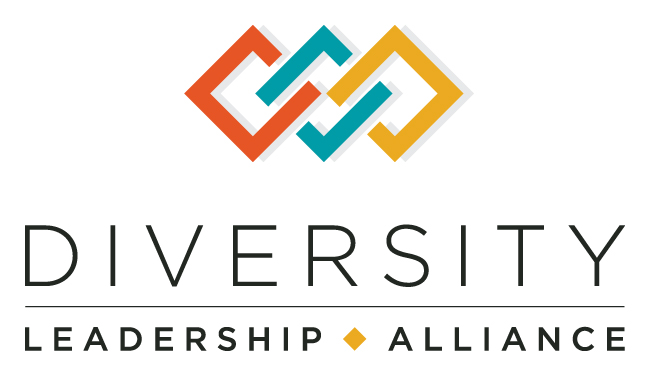
In today’s evolving workplace, fostering an inclusive culture is no longer optional—it’s a necessity. Companies that prioritize diversity, equity, and inclusion (DEI) benefit from enhanced innovation, stronger employee engagement, and a competitive edge in the market. At Diversity Leadership Alliance, we empower organizations with the knowledge and resources they need to cultivate a truly inclusive work environment.
Why Diversity Training Matters
Diversity training is crucial for building awareness, promoting cultural competence, and fostering an environment where all employees feel valued. When implemented effectively, diversity training helps:
- Reduce unconscious bias
- Enhance collaboration among diverse teams
- Improve problem-solving and decision-making
- Strengthen employee satisfaction and retention
To ensure diversity training is impactful, organizations must take strategic steps to embed these principles into their culture.
Key Steps to Implement Effective Diversity Training
1. Gain Leadership Buy-In
Diversity initiatives succeed when leaders set the tone. When executives champion DEI efforts, employees are more likely to engage and take training seriously. Leaders should actively participate in training and integrate DEI into their strategic goals.
2. Conduct a Workplace Assessment
Before designing a diversity training program, assess your organization’s current culture. Conduct surveys, focus groups, and anonymous feedback sessions to identify key areas for improvement. This data will help tailor training to your organization’s specific needs.
3. Define Clear Training Goals
Set measurable objectives for your diversity training program. Goals might include increasing cultural awareness, mitigating bias in hiring practices, or improving inclusive leadership skills. Clear goals help track progress and measure success over time.
4. Develop Engaging Training Content
Effective diversity training should be interactive and engaging. Use a mix of:
- Workshops & Webinars – Led by DEI experts, these provide real-world scenarios and actionable insights.
- Role-Playing Exercises – Helps employees practice inclusive behaviors.
- Case Studies – Showcases real-life examples of DEI challenges and solutions.
- E-Learning Modules – Allows employees to learn at their own pace.
5. Encourage Open Dialogue
Diversity training should be a safe space for open discussions. Encourage employees to share experiences, ask questions, and engage in meaningful conversations. Creating an environment of trust fosters honest communication and personal growth.
6. Integrate DEI Into Company Policies
Training alone is not enough. Organizations must embed DEI principles into:
- Recruitment and hiring practices
- Employee performance evaluations
- Workplace policies and codes of conduct
- Leadership development programs
By institutionalizing DEI efforts, organizations ensure long-term inclusivity beyond training sessions.
7. Provide Ongoing Learning Opportunities
Diversity training should not be a one-time event. Continuous education is key. Offer:
- Monthly DEI workshops (Join our upcoming DEI workshops)
- Annual conferences on diversity and leadership (Check out our 2024 Conference)
- Mentorship programs to support diverse talent
Supporting an Inclusive Culture Beyond Training
Establish Employee Resource Groups (ERGs)
ERGs provide employees with spaces to share experiences and advocate for inclusivity. Whether focused on race, gender, LGBTQ+ identities, or disability inclusion, ERGs enhance belonging and drive meaningful change.
Review & Update DEI Policies Regularly
DEI efforts must evolve with time. Regularly assess policies to address emerging issues and ensure they reflect the organization’s commitment to inclusion. For insights on upcoming DEI trends, explore The Future of DEI Training: Trends to Watch in 2025.
Promote Inclusive Leadership
Train leaders to be DEI advocates. Leaders should:
- Model inclusive behaviors
- Actively mentor underrepresented employees
- Address discrimination and microaggressions promptly
- Foster a workplace where diverse perspectives are valued
Celebrate Diversity
Recognizing cultural events, achievements, and contributions of diverse employees fosters appreciation and respect. Hosting DEI-focused events, such as Women Leaders on Success, Allyship, and Impact, is a great way to engage employees in inclusion efforts.
Conclusion: The Path to a More Inclusive Future
Creating an inclusive culture requires ongoing commitment, strategic planning, and genuine engagement from all levels of an organization. By implementing effective diversity training, integrating DEI into policies, and fostering a culture of continuous learning, companies can build workplaces where everyone thrives.
Diversity Leadership Alliance is here to support you in your DEI journey. Explore our youth programs and leadership development initiatives to drive meaningful change within your organization.
The time for action is now—let’s build a more inclusive future together!
FAQs
1. What is diversity training, and why is it important?
Diversity training is an educational initiative designed to raise awareness about diversity, equity, and inclusion (DEI) in the workplace. It helps employees recognize and address biases, fosters cultural competence, and promotes respectful interactions among diverse teams. Organizations that invest in diversity training see improved collaboration, innovation, and employee engagement, leading to a more inclusive and productive work environment.
2. What are the key components of an effective diversity training program?
A well-rounded diversity training program includes:
- Awareness training: Educates employees on unconscious bias, privilege, and systemic inequities.
- Skill-building exercises: Provides tools to navigate cross-cultural communication and conflict resolution.
- Interactive learning: Incorporates real-world case studies, role-playing, and scenario-based discussions.
- Leadership involvement: Encourages management to model inclusive behaviors and integrate DEI into organizational strategy.
- Continuous assessment: Evaluates effectiveness through surveys, feedback, and performance metrics.
3. How can organizations measure the success of their diversity training programs?
Success can be measured through qualitative and quantitative methods, such as:
- Employee feedback surveys: Gauge participants’ perceptions and learning takeaways.
- Retention and engagement rates: Track improvements in job satisfaction and workplace harmony.
- Diversity metrics: Monitor representation in hiring, promotions, and leadership roles.
- Behavioral changes: Observe shifts in team dynamics, inclusive language use, and conflict resolution effectiveness.
- Training participation rates: Assess how many employees complete the training and apply the knowledge.
4. How often should diversity training be conducted?
Diversity training should not be a one-time event but an ongoing initiative. Best practices suggest:
- Annual refresher courses to reinforce learning and address emerging DEI challenges.
- Quarterly workshops focusing on specific topics like allyship, intersectionality, and inclusive leadership.
- Ongoing microlearning through short e-modules, newsletters, and DEI discussions integrated into team meetings.
5. What are some common challenges organizations face when implementing diversity training?
Organizations may encounter challenges such as:
- Resistance to change: Some employees may feel uncomfortable or defensive when discussing biases and privilege.
- Superficial implementation: One-time workshops without follow-up fail to create lasting impact.
- Lack of leadership buy-in: Without executive support, DEI efforts may not be taken seriously.
- Unrealistic expectations: Training alone won’t solve systemic issues; it must be paired with policy changes and accountability measures.
- Limited customization: Generic training content may not address industry-specific or company-specific DEI needs.
6. How can leadership support diversity training efforts?
Leaders play a crucial role in fostering an inclusive culture by:
- Actively participating in diversity training to set an example.
- Embedding DEI principles into company values, policies, and decision-making processes.
- Encouraging open dialogue and providing safe spaces for employees to voice concerns.
- Allocating resources for ongoing training, mentorship, and support programs.
- Holding managers accountable for implementing inclusive practices in their teams.
7. How does diversity training help in mitigating unconscious bias?
Unconscious bias training helps employees recognize their hidden biases and take steps to reduce their impact by:
- Raising awareness of how biases influence decisions in hiring, promotions, and team dynamics.
- Providing strategies like structured interviews, diverse hiring panels, and blind resume reviews to minimize bias.
- Encouraging self-reflection and mindfulness to reduce stereotyping and assumptions in daily interactions.
- Promoting a culture of accountability where employees challenge biased behaviors and advocate for inclusivity.
8. What industries benefit the most from diversity training?
Diversity training is valuable in all industries, but it is particularly critical in:
- Corporate sectors (Finance, Tech, Law): Helps in attracting diverse talent and fostering inclusive leadership.
- Healthcare: Ensures culturally competent care, reducing disparities in patient outcomes.
- Education: Encourages inclusive teaching practices and equitable opportunities for all students.
- Retail & Hospitality: Enhances customer service and addresses cultural sensitivities in diverse clientele.
- Government & Nonprofits: Supports policy-making that reflects the needs of diverse communities.
9. How can small businesses implement diversity training on a limited budget?
Even with budget constraints, small businesses can promote DEI by:
- Utilizing free or low-cost DEI resources, such as online webinars and toolkits.
- Partnering with local DEI organizations or consultants for tailored guidance.
- Encouraging peer-led discussions and book clubs focused on diversity topics.
- Incorporating DEI learning into regular team meetings.
- Seeking grants and funding opportunities for workplace inclusion initiatives.
10. What is the future of diversity training and workplace inclusion?
DEI training is evolving with new trends, including:
- AI-powered DEI analytics: Using data to track bias in hiring and promotions.
- Gamification: Making training more engaging through interactive simulations.
- Virtual reality training: Offering immersive experiences to help employees develop empathy and cross-cultural understanding.
- Inclusion coaching: Providing one-on-one guidance to leaders and employees on inclusive practices.
- Focus on intersectionality: Addressing the overlapping impact of race, gender, disability, and other identity factors.
